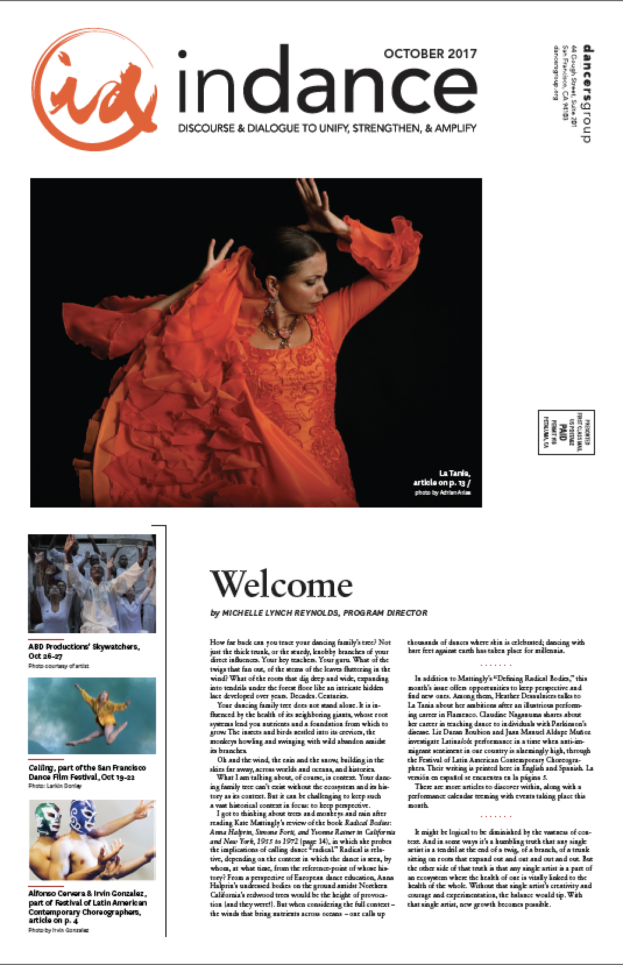 How far back can you trace your dancing family’s tree? Not just the thick trunk, or the sturdy, knobby branches of your direct influences. Your key teachers. Your guru. What of the twigs that fan out, of the stems of the leaves fluttering in the wind? What of the roots that dig deep and wide, expanding into tendrils under the forest floor like an intricate hidden lace developed over years. Decades. Centuries.
How far back can you trace your dancing family’s tree? Not just the thick trunk, or the sturdy, knobby branches of your direct influences. Your key teachers. Your guru. What of the twigs that fan out, of the stems of the leaves fluttering in the wind? What of the roots that dig deep and wide, expanding into tendrils under the forest floor like an intricate hidden lace developed over years. Decades. Centuries.
Your dancing family tree does not stand alone. It is influenced by the health of its neighboring giants, whose root systems lend you nutrients and a foundation from which to grow. The insects and birds nestled into its crevices, the monkeys howling and swinging with wild abandon amidst its branches.
Oh and the wind, the rain and the snow, building in the skies far away, across worlds and oceans, and histories.
What I am talking about, of course, is context. Your dancing family tree can’t exist without the ecosystem and its history as its context. But it can be challenging to keep such a vast historical context in focus: to keep perspective.
I got to thinking about trees and monkeys and rain after reading Kate Mattingly’s review of the book Radical Bodies: Anna Halprin, Simone Forti, and Yvonne Rainer in California and New York, 1955 to 1972, in which she probes the implications of calling dance “radical.” Radical is relative, depending on the context in which the dance is seen, by whom, at what time, from the reference-point of whose history? From a perspective of European dance education, Anna Halprin’s undressed bodies on the ground amidst Northern California’s redwood trees would be the height of provocation (and they were!). But when considering the full context – the winds that bring nutrients across oceans – one calls up thousands of dances where skin is celebrated; dancing with bare feet against earth has taken place for millennia.
* * *
In addition to Mattingly’s “Defining Radical,” this month’s issue offers opportunities to keep perspective and find new ones. Among them, Heather Desaulniers talks to La Tania about her ambitions after an illustrious performing career in Flamenco. Claudine Naganuma shares about her career in teaching dance to individuals with Parkinson’s disease. Liz Duran Boubion and Juan Manuel Aldape Muñoz investigate Latina/o/x performance in a time when anti-immigrant sentiment in our country is alarmingly high through the Festival of Latin American Contemporary Choreographers. Their writing is printed here in English and Spanish. Su escritura está impresa aquí en inglés y español.
There are more articles to discover within, along with a performance calendar teeming with events taking place this month.
* * *
It might be logical to be diminished by the vastness of context. And in some ways it’s a humbling truth that any single artist is a tendril at the end of a twig, of a branch, of a trunk sitting on roots that expand out and out and out and out. But the other side of that truth is that any single artist is a part of an ecosystem where the health of one is vitally linked to the health of the whole. Without that single artist’s creativity and courage and experimentation, the balance would tip. With that single artist, new growth becomes possible.


